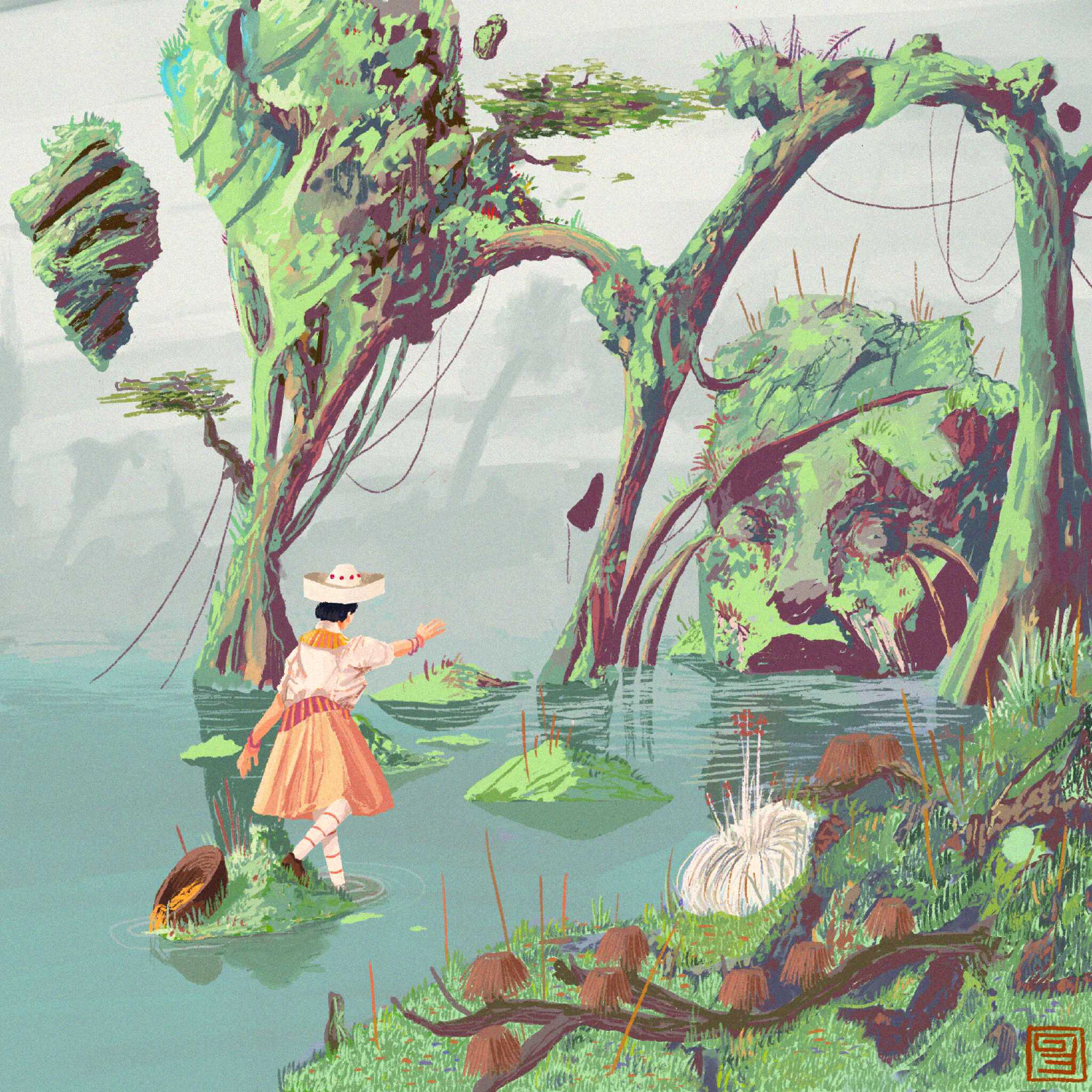NEW Story: Sunday Morning
A Mineral Lake starts absorbing Grief in Pachinki

This article is not part of Vekllei canon. It may be old, obsolete or just a bit of fun.
Rena’s little boy was found in the closest town with his guts turned out and his throat cut. They didn’t tell it to Rena like that, but that’s what happened to him. His village and people, the Lehmanen, are descendants of Palace Gods forced out of the heavens some millennia ago over their refusal to smoke Domen, a sort of opium of the Gods and essential practice in the Palace.
As descendants of Palace Gods, many still carry birthstones in their bodies — small gems buried in the heart of the gut, beneath the stomach. These birthstones are very powerful magical artefacts and fetch a high price in Pachinki’s larger and less magical kingdoms. Rena’s little boy, who was not yet ten, had been taken by pirates looking for his stone and killed. The great tragedy of it was that he was fathered by a man from Zen — the boy had not inherited a birthstone from his mother.
He was her only child and she’d been widowed in the war. The chief of their village announced a month of mourning and fasting in his memory. Once the period had passed, life went on. Rena resumed work in the mineral swamps in which Lehmanen live. The roots and algae that grow in these waters sustain communal village life and produce potions of medicinal value, including leprosy and tuberculosis vaccines.
Two months after the murder of her only child, Rena came across a stone that struck her dumb with shock. It was her boy’s face, unmistakeable in the perfection of the diorite, caught in the terror and pain of his final moments. It hadn’t been there the month before. She waded over to it but found no other indication of its origin.
That boy was only the first. As more people died, and the village went through its cycles of joy and grief, the swamp slowly began to fill with the forms of the dead. Heads of the fog. The Lehmanen were confused and angry by the insensitivity of the mineral swamp, and couldn’t understand why it was happening. Something was intercepting the quiet grief of these isolated people and resurrecting the memory of the dead. Was it the minerals? The wind? Something beneath the waters? Was it even a phenomena so simple as to assign to a single force of nature?
Nearly a year after the death of Rena’s little boy, another head appeared, joining dozens already hidden in the fog of the mineral swamps. This one was identical to the diorite totems before it. But it was unique.
This one was of Rena — and she was very much alive.
—
The Pachinki pangea is home to six subcontinents of old magic, mostly inherited from the Palace Gods, who are worshipped by urban centres to this day. The Lem subcontinent is sparsely populated, as the minerals of its many swamps are rife with disease (an illness contracted here, of which there are many, are called plaguentart in Lem or honeydeath in the Zen tongue).
The Lem are ignorant of the much older magic of the swamps, which predates perhaps even the Palace itself. As stupid to it as they are ultraviolets, the people of Pachinki can only react to the manifestations of it, and will never harness the raw, low-frequency power of ancient harmonics.
— Footnotes —
Pachinki is the creation of a fourteen-year-old girl in my world, Vekllei.
So Pachinki occasionally lurches into horror otherwise incongruous with the sweet fantasy Tzipora shows such affection for. Pachinki may be a world of peace and wonder, but just like Tzipora’s own present utopian surrounds, it belies a historical context of starvation, mass graves and political violence. Part of the wonder of Pachinki, looking back, is that Tzipora seemed keenly aware of the prohibitively dark nature of this kind of violence in her otherwise escapist whimsy, and this maternal turbulence with her own work is so obvious that even the most casual reader will be conscious of its inconsistency. A page about the pleasure of tasting fruit gems will pirouette into musings on the use of slavery in their procurement and the sabotaging of their production to justify conquest and war. The surreal dissonance of her own motivations for creating Pachinki reflect a girl who was herself living a surreal, contradictory existence — at her time of writing, she was living in a land of plenty and peace, where just a year before she was nearly killed after grocers in Cherry started poisoning their food waste to drive away homeless and vagrants. Her own existence was one of startling contrast — a rapid transition to petticoat society from the misery of the American South, where she witnessed indiscriminate slaughter, sexual violence and crippling poverty. Whatever hurts is real, and so Vekllei did not feel real to her — and consequently, Pachinki is suspended in the same internal turmoil.
Pachinki isn’t a normal constructed world. It has its own canon. It is a creation of Tzipora, who is the character utopia of my worldbuilding project. Soon after she moves to Vekllei, she’s pretty friendless and surrounded by pulpy paperback novels. Pachinki is sort of a worldbuilding project within a worldbuilding project, and it belongs to her.
you can check my reddit profile (and there’s a follow button there now, because reddit is Facebook) for more posts about Vekllei and Tzipora. This isn’t the last you’ll see of Pachinki, not by a long shot!
www.vekllei.city or insta fer more. I love questions. tahnk